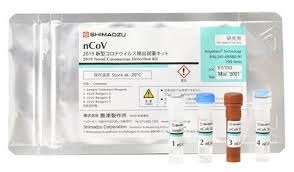Measurement of the molecular weight distribution of polymers is one field of HPLC utilizing the size exclusion mode and has been called GPC (gel permeation chromatography) for a long time. Recent requirements for increased throughput by high speed analysis are also considered as a priority in GPC, which is an established analytical technique. In this article, a high speed GPC analysis was carried out using a GPC system consisting of a high speed GPC column packed with smaller particles and a Nexera XR UHPLC system that absolutely minimizes external column dispersion to verify its performance. In addition, this article also introduces a simultaneous determination of low molecular weight polymer additives within a high speed GPC
analysis using an additional PDA (photodiode array) detector and a deconvolution function provided in the LabSolutions™ workstation to show an improved efficiency of GPC analysis, whereas ordinary quantitative analysis of these additives is carried out by HPLC separation mode other than GPC such as reversed phase mode after fractionation by preparative LC that requires a long time and tedious procedures.
In the analysis described here, a high speed GPC analysis was carried out using a GPC column for rapid analysis having a particle size of 3.5 μm and a Shodex™ RI-504, which is a RID that supports semi-microscale analysis. The average molecular weight and the polydispersity were
measured, and the repeatability of five consecutive analyses was verified

Deconvolution of Unseparated Additives in Polymer Sample by i-PDeA II
In quantitative analysis of polymer additives, complete separation of two or more low molecular weight additives is generally difficult using only GPC columns. Consequently these additives are collected from the polymer by preparative LC or the like followed by for example reversed phase
chromatography, which can be expected to provide higher separation performance.
However, it is possible to obtain deconvoluted chromatographic approximate solutions for the respective compounds by simulation using the i-PDeA II (Intelligent Peak Deconvolution Analysis II) function of the LabSolutions workstation, which deconvolutes unseparated peaks based on the spectral information obtained with a PDA detector, and the chromatographic information obtained by deconvolution can be used as is in quantitative determinations. Moreover, deconvolutio is not limited to chromatograms, but can also be applied to spectral analysis, also contributing to enhancement of the qualitative analysis performance.
Among the additives contained in the polystyrene sample analyzed in this article, elution times were confirmed for Irganox® 1010 and Tinuvin® 144, for which standard compounds were able to be prepared, and these compounds showed almost same elution position at UV254 nm in the PDA chromatogram. As shown by the data processing correction line, these two compounds formed an unseparated peak. shows the overlaid deconvoluted chromatograms of the respective compounds obtained by i-PDeA II processing during the elution interval of polystyrene and low molecular weight additives. The peaks originating from Irganox 1010 and Tinuvin 144 were deconvoluted to traces #2 and #4, and their content ratios in the polystyrene were quantitively determined as 26.9 mg/g and 3.9 mg/g, respectively, using calibration curves created separately based on their peak areas.

The results of this experiment confirmed that the Shimadzu Nexera XR GPC system was able to be applied to high speed GPC analysis with equivalent reliability to that of conventional GPC analysis in a shorter time. Although complete separation and quantitative determination of low molecular weight additives were difficult when using only a conventional GPC column, this experiment demonstrated that the separation and quantitative analysis of these additives were possible simultaneously within a high speed GPC analysis by the i-PdeA II deconvolution function of the LabSolutions workstation.








